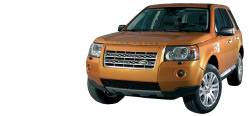oldgeezer
Member Since: 09 Apr 2011
Location: Wiltshire
Posts: 1303

 
|
| Insurance dealer servicing and remapping BEWARE | |
As vehicle technology moves forward insurance companies are adding more clauses !
Vehicles fitted with ADAS (Advanced driver-assistance systems) which actually includes HDC and adaptive cruise control, park assist to list just a few
1. Under the vehicle and aviation bill, drivers of self-driving cars will not be covered by insurance if the software has been subject to unauthorised changes, or fail to keep software up-to-date?
2. Under SAE International's J3016 standard (known as the: Taxonomy and Definitions for Terms Related to On-Road Motor Vehicle Automated Driving Systems), there are six levels of autonomous vehicles.
The guide continues that the six levels are consistent with industry practice, were designed to "eliminate confusion" and be used in engineering, legal, media and public discussions.
Level 0: No automation
Does what it says on the tin. The car is not automated in any way and relies on a human for all the tasks.
Level 1: Driver assistance
Level 1 involves the human and a computer system working together on tasks, with most the work being done by the person at the wheel. It encompasses many cars that are already on the road today running with so-called assistance modes such as Jaguar Land Rover's experimental off-road vehicles, capable of using off-road cruise control.
SAE International explains level 1 driver assistance systems include steering, acceleration/deceleration as well as features that use "information about the driving environment". Ultimately, though, the human is expected to do the majority of the work.
Level 2: Partial automation
Here's where things start to get serious. In level 2 systems, the steering and speed of the vehicle are controlled by "one or more driver assistance systems" but a human controls the other elements of driving.
Tesla's Autopilot system has been described as being within the level 2 bracket, although it is also considered, by some, to be a level 3 vehicle.
Level 3: Partial automation
Vehicles in level 3 and above are considered "automated driving systems". The substantial difference here is that the vehicles can monitor the driving environment around them. Crucially, these types of vehicles make decisions themselves. For instance, a level 3 car will be capable of seeing a slower moving vehicle in front of it before taking the decision to overtake. The human is on hand, mostly, to intervene if things go wrong.
Level 4: High automation
The autonomous cars Ford wants to put on the road by 2021 are considered to be level 4 vehicles.
SAE describes this as having "driving mode-specific performance by an automated driving system of all aspects of the dynamic driving task, even if a human driver does not respond appropriately to a request to intervene". Put more simply, if something goes wrong, the car can handle it itself.
Level 5: Full automation
In this scenario, no human control of a vehicle is needed at all. Level five has full automation and vehicles don't need any pedals, steering wheels, or controls for a human to take charge. Google, through its Waymo subsidiary, is working on producing this level of automation.
So if its not had any software updates carried out that are due or the vehicle has been remapped it does leave some questions !
In the event of a serious accident and or death insurance companies do now send an expert to the vehicle to retrieve crash data and ECU information.
The amount of crash data available is quite informing !
You have been warned ! Jaguar x-type sport gone
Jaguar x-type 2.2d sport one of my best cars ever sadly gone
Freelander 2 GS auto 2008 most unreliable ever ! gladly gone
Freelander 2 GS manual 2013 only time will tell !
|













![]()


